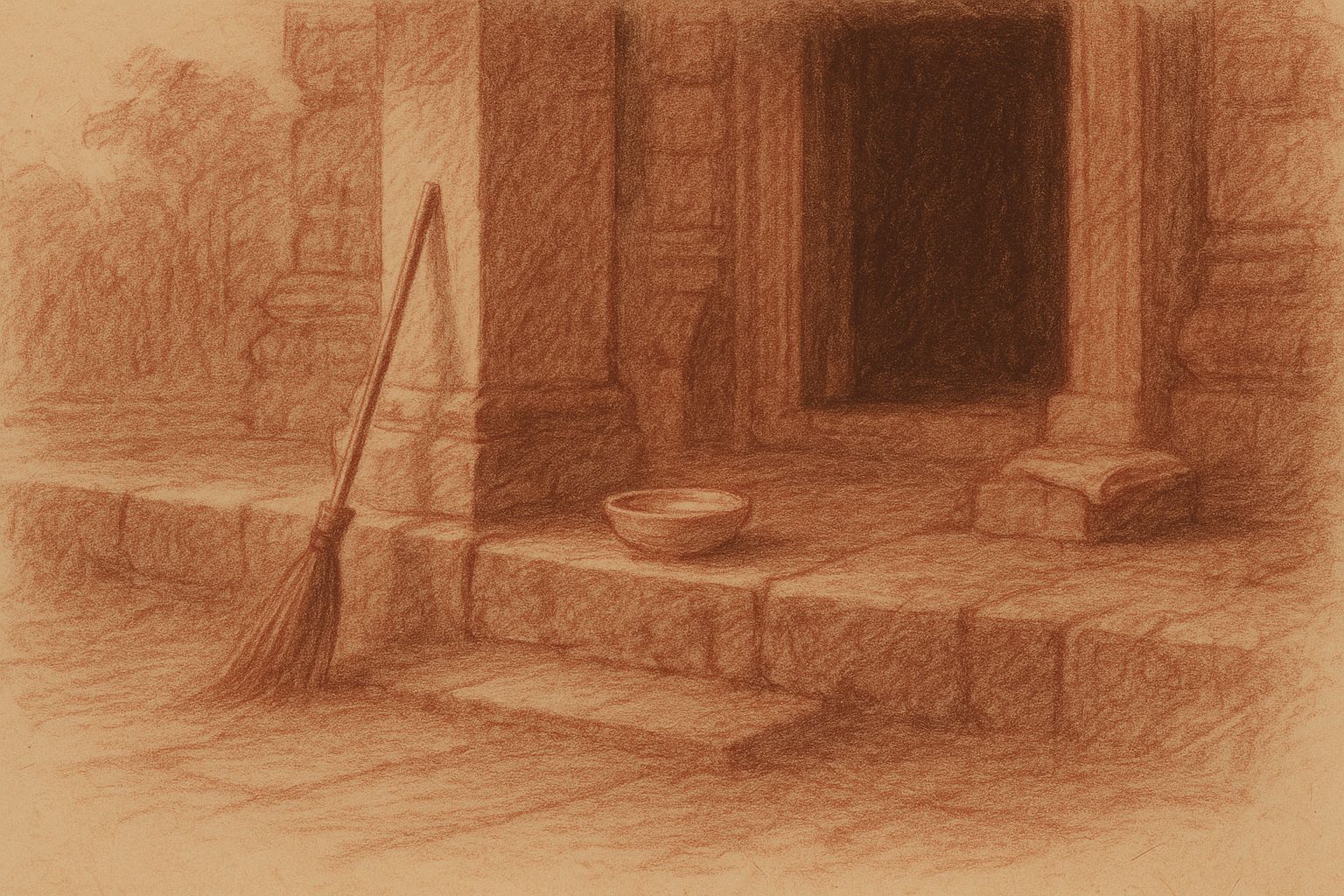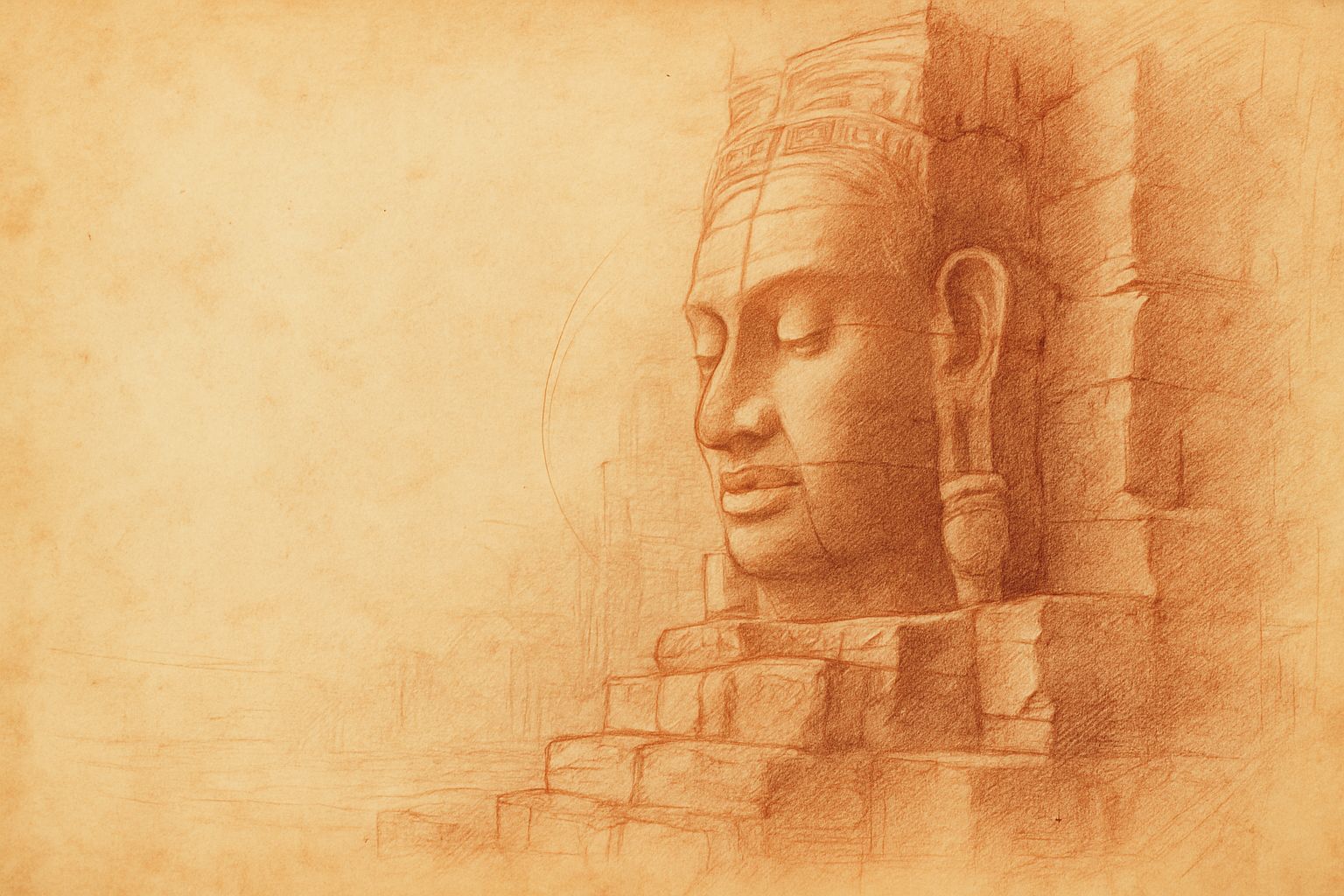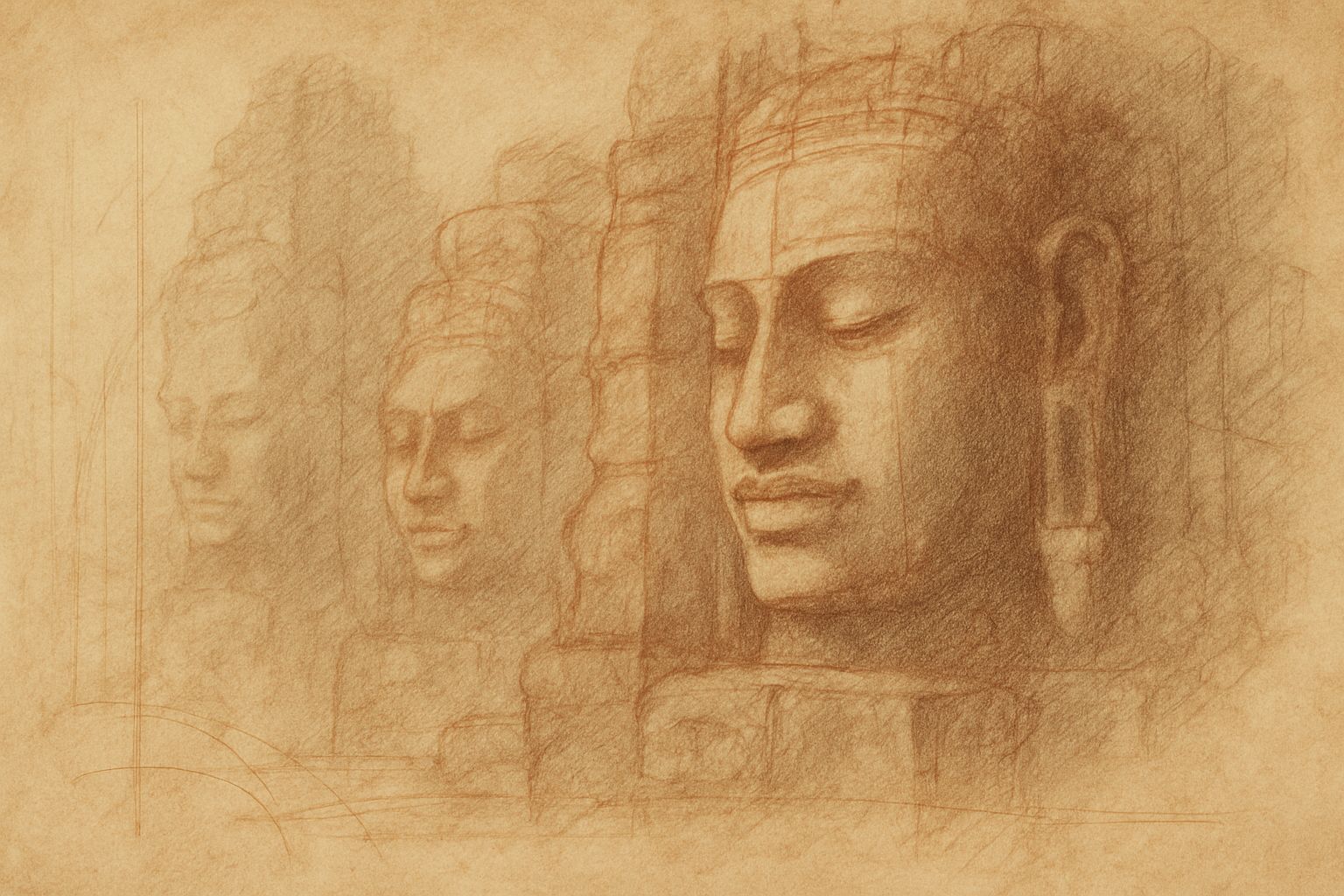Complimentary worldwide shipping on orders over $400 · No import tariffs for most countries
Complimentary worldwide shipping on orders over $400 · No import tariffs for most countries

The Making of Bakong Temple, Study I, Angkor, Cambodia. 2018
2 min read
This image, and this ancient temple, will always have a special place in my heart.
The Bakong Temple was the first significant temple-mountain, symbolising Mount Meru home of the gods, built by the Kings of Angkor, and it seems fitting that is was the first piece that I completed in my Spirit of Angkor project.
I envisioned this final image on my very first visit to the Bakong Temple, as often seems to happen in my work. As I crossed the causeway that morning from the East, I marvelled at the beautiful symmetries, the sense of spirituality, of a deeper mystery, and felt the weight of the thousand years that have passed since this place was built. To my right, saffron-clad monks were milling around a brightly painted Buddhist monastery. With each step of my approach, I could make out more and more detail; the timeworn textures of the Bakong Temple’s sandstone cladding, the fierce guardian lions protecting the majestic stairway, all beckoning me upwards to the exquisitely carved central prasat.
Filled with wonder, I could feel the image I wanted to create forming in the back of my mind. Yet how could I make my vision real? How could I communicate my feelings for this place? The beauty, the mystery, the sophisticated detail, the stillness, the profound sense of time?
That day I explored the temple, sat and gazed for hours, and made dozens of sketches. In the months that followed, I visited the Bakong Temple many more times; in the intense Cambodian sun and in torrential rain, from before the dawn and until well after dusk, surveying each aspect of the temple in every lighting condition, watching the shadows play on the delicate carvings, each day sketching detailed studies and scribbling copious notes. I often found myself sitting alone, bathed in moonlight, listening to the cacophonous song of insects in the surrounding jungle as I contemplated the visual poem of the chiaroscuro scene before me.
It took me several years of dedicated research and experimentation to develop the new techniques that I would need to embark on my Spirit of Angkor journey, followed by a year and countless hours of painstaking work on the image itself, before I was content that I had realised my vision.
It is with great honour and pride that I present to you Bakong, Study I, Angkor, Cambodia. 2018.
If you enjoyed this article, and you would like to continue to share in my adventures, please sign up for my newsletter below. Since I no longer post on social media, this is the best way to stay up-to-date with my work.
Also in Library

Those Who Keep the Way Open — On the Quiet Guardians of Angkor’s Thresholds
3 min read
Quiet gestures shape the way into Angkor — a swept stone, a refilled bowl, a hand steadying a guardian lion. This essay reflects on the unseen custodians whose daily care keeps the thresholds open, revealing how sacredness endures not through stone alone, but through those who tend its meaning.

Multiplicity and Mercy — The Face Towers of Jayavarman VII
5 min read
A new vision of kingship rises at the Bayon: serene faces turned to every horizon, shaping a world where authority is expressed as care. Moving through the terraces, one enters a field of steady, compassionate presence — a landscape where stone, light, and time teach through quiet attention.

Stone That Dreams
4 min read
Bayon wakes like a mind emerging from shadow. Its many faces shift with light and breath, teaching that perception—and the self—is never singular. In walking this forest of towers, the pilgrim discovers a quiet multiplicity within, held together by a calm that feels both ancient and newly understood.
Join My Studio Journal
Receive occasional letters from my studio in Siem Reap—offering a glimpse into my creative process, early access to new fine art prints, field notes from the temples of Angkor, exhibition announcements, and reflections on beauty, impermanence, and the spirit of place.
No noise. No clutter. Just quiet inspiration, delivered gently.
Subscribe and stay connected to the unfolding story.

Join My Studio Journal
Receive occasional letters from my studio in Siem Reap—offering a glimpse into my creative process, early access to new fine art prints, field notes from the temples of Angkor, exhibition announcements, and reflections on beauty, impermanence, and the spirit of place.
No noise. No clutter. Just quiet inspiration, delivered gently.
Subscribe and stay connected to the unfolding story.
